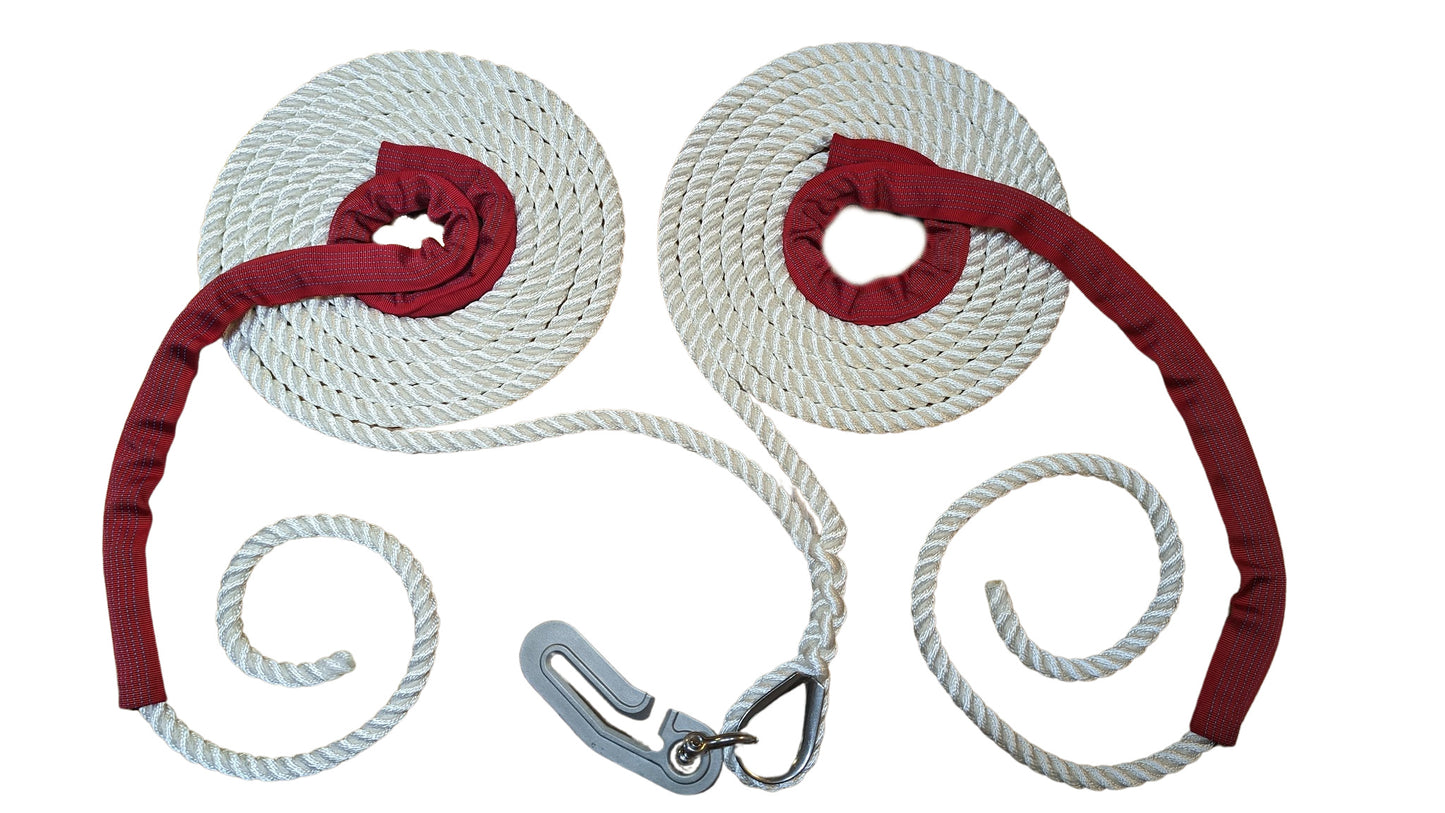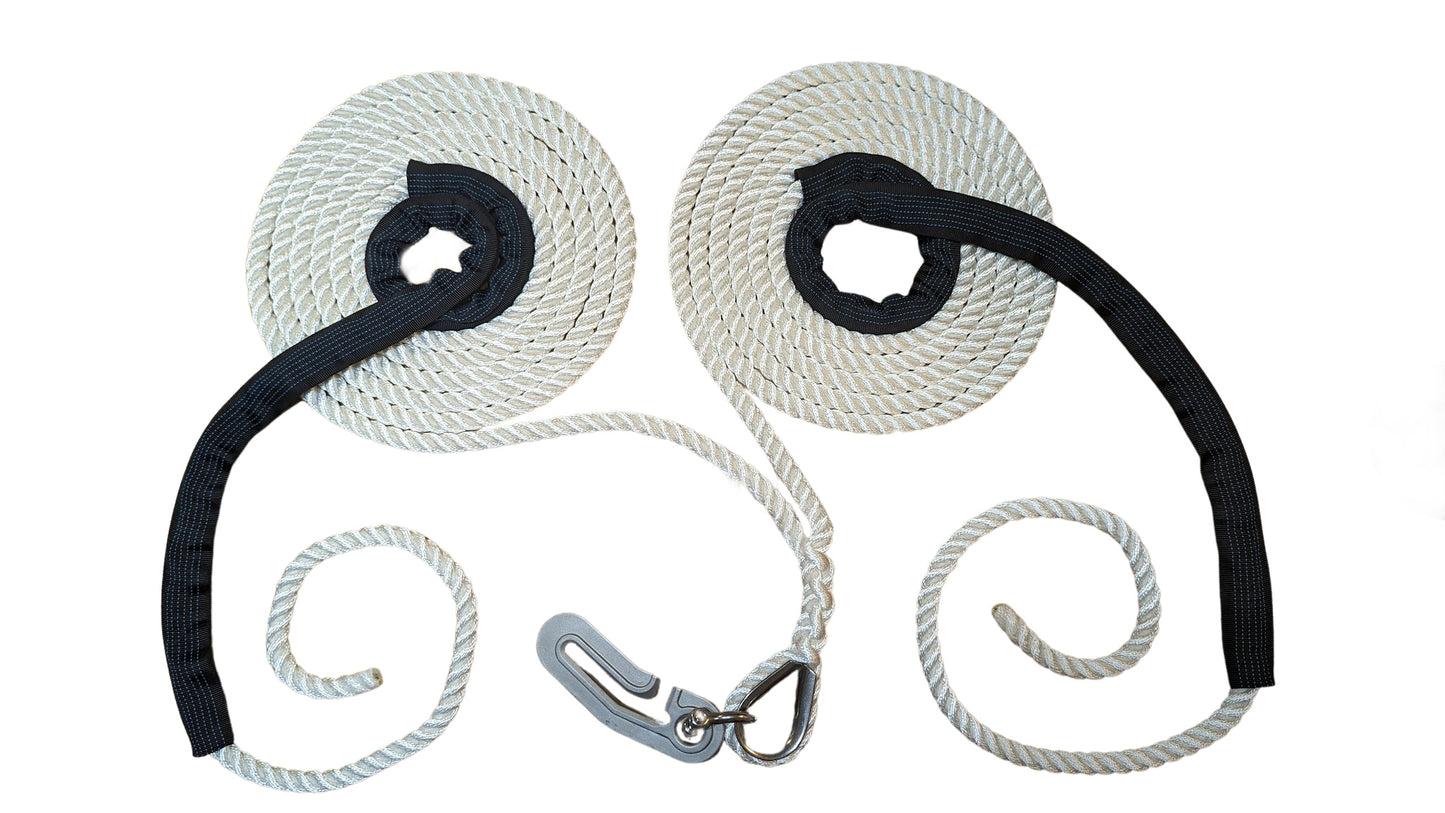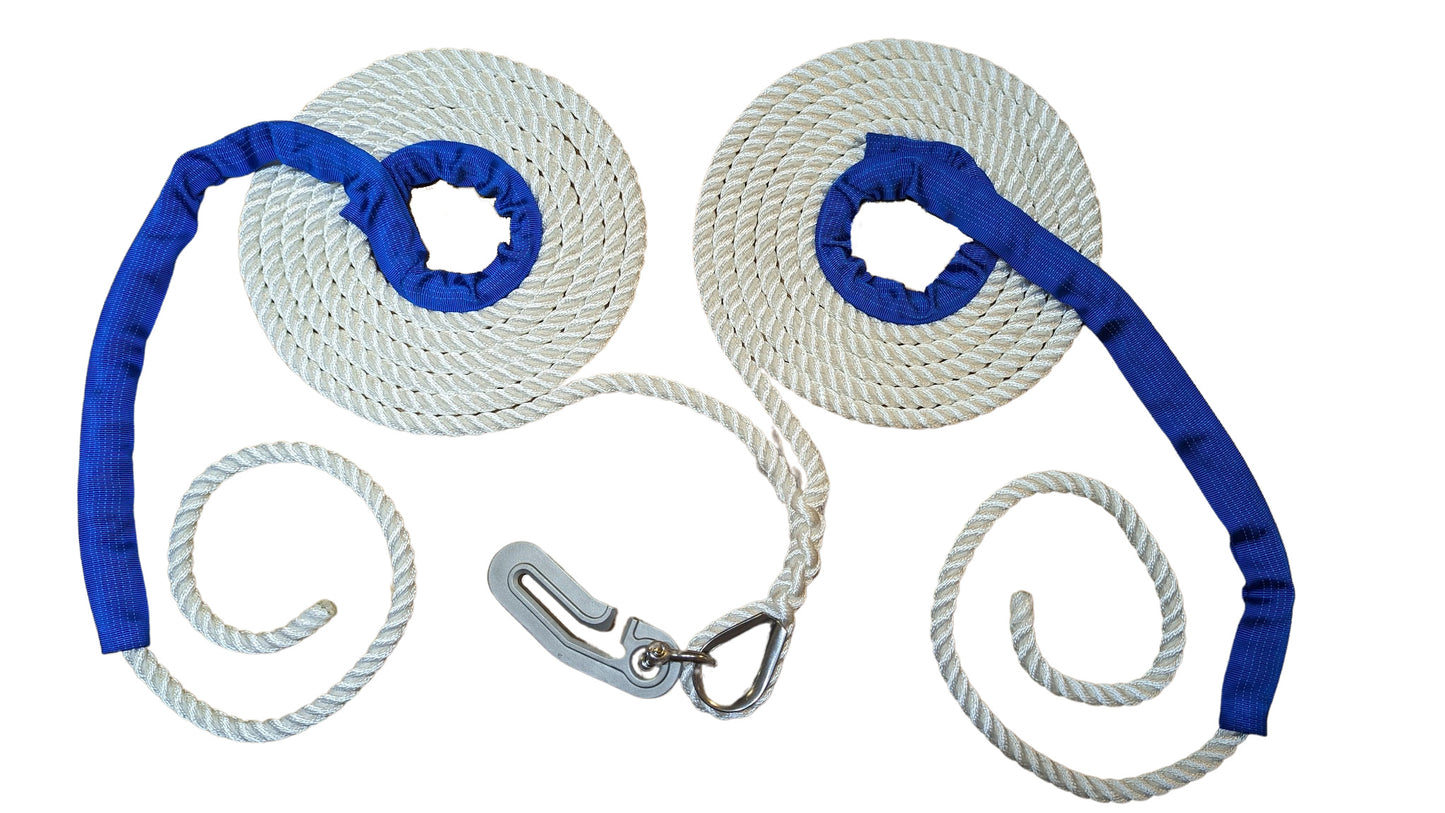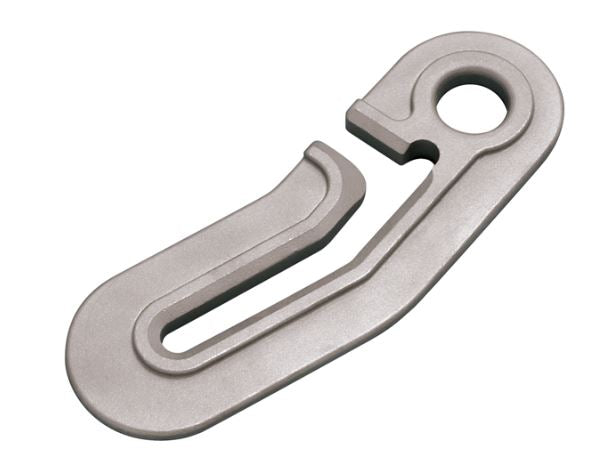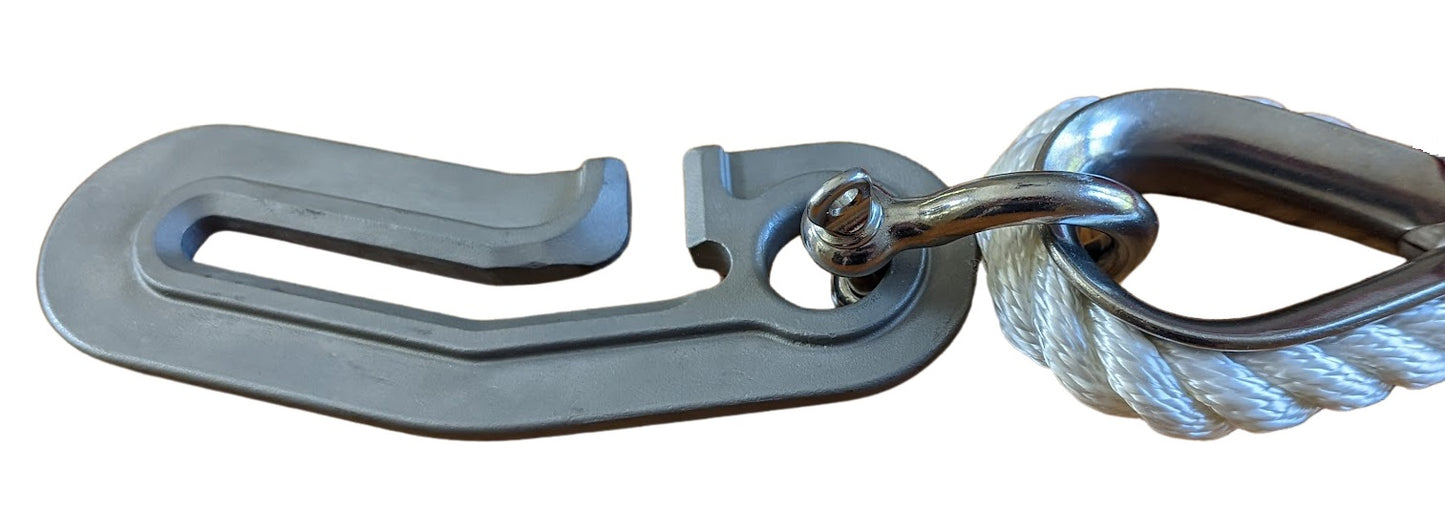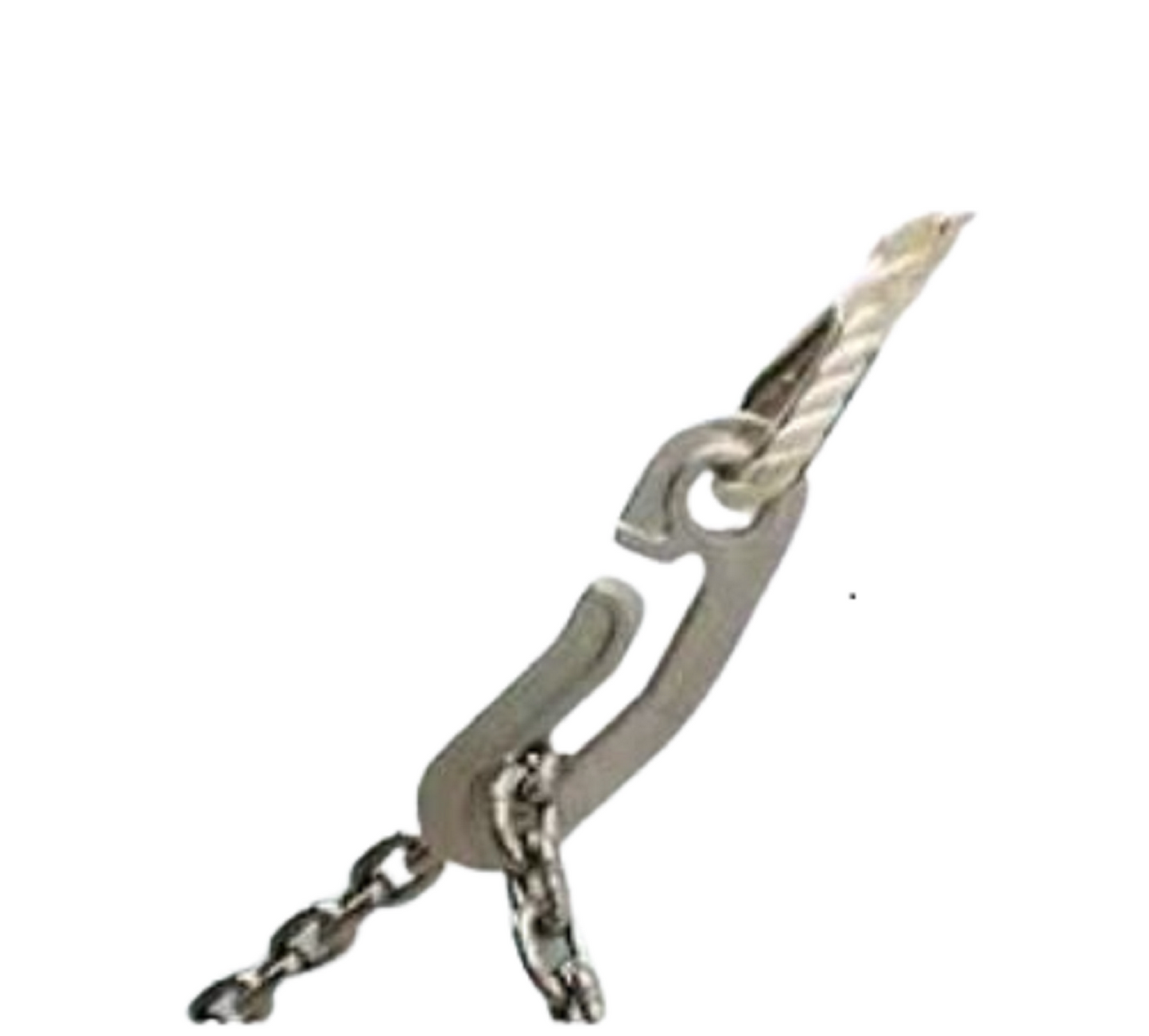KANGAS MARINE
Anchor Bridle & Snubber System
Couldn't load pickup availability
Introducing the new Kangas Marine Anchors Bridle/Snubber System. The three-strand double anchor shock bridle system/anchor snubber line comes with an SS thimble and SS shackle. It features a strong and durable design that slowly stretches and puts pressure on the anchor chain, digging the anchor in and preventing shock loading on the anchor chain. The system is designed to absorb the shock load from wind gusts and waves.
A sailboat's anchor bridle is an essential piece of equipment that helps distribute the load from the anchor evenly across the boat's bow. This can help prevent damage to the boat's anchor roller and bow, as well as keep the boat more stable in rough conditions.
This product is designed for easy installation, removal, and storage. It's designed for 3/8”, 5/16", or 1/4" chain, depending on your selection. If you need a different dimension, please contact us at kangasmarine@gmail.com.
The maximum shock absorption length is 23 feet long line (each side), with 3/4-inch or 5/8-inch 3-strand twisted nylon rope that provides great strength and "gives" under load to absorb energy, ensuring that your anchor has the highest chance of staying put. Nylon is highly resistant to the harmful effects of sunlight better than other synthetics. It's the rope of choice for anchoring rode.
Stainless Steel Hardware: The system comes with heavy-duty 316 stainless steel shackle (Suncor Stainless Steel Inc. MA, USA), Suncor Anchor Snubber Hook - Chain Size 3/8", 5/16", or 1/4", Suncor Heavy Duty Stainless Steel Thimbles – 3/4” or 5/8” Inch, and Suncor Bow/Anchor Shackle with Screw Pin - 3/8” or 5/16”.
Chafe Protection: The system features incorporated chafe protection with 4 feet of adjustable chafe guard made of 1000 Denier Polyurethane CORDURA Nylon. The chafe guard can be adjusted to any point.
Exposed Splice: An exposed splice on an anchor bridle refers to a splice in the rope or line that is visible and not covered by any protective material. This type of splice is important for mold protection and inspection for a few reasons. Firstly, when a splice is covered by a protective material, such as a nylon sleeve or rubber hose, it can create a pocket of moisture that can lead to mold growth over time. This can weaken the rope and compromise its strength, which can be dangerous when dealing with heavy loads or rough seas. An exposed splice allows air to circulate around the rope and helps prevent moisture from becoming trapped, reducing the risk of mold growth. Secondly, an exposed splice makes it easier to inspect the rope for wear and tear. Over time, ropes can become damaged by exposure to UV rays, saltwater, and other environmental factors. Inspecting the rope regularly for signs of wear, such as fraying or discoloration, can help identify potential problems before they become serious. An exposed splice makes it easier to inspect the rope along its entire length, without having to remove any protective material. Overall, using an exposed splice on an anchor bridle can help protect against mold growth and make it easier to inspect the rope for wear and tear. This can help improve the bridle's strength, durability, and reliability, which is important when anchoring a sailboat in a range of conditions.
No loops included: Tying an anchor bridle to a cleat is generally considered to be a better option than using a braided loop for a few reasons. Tying the bridle to a cleat creates a more secure connection between the boat and the anchor. When tying the bridle to a cleat, the rope is wrapped around the cleat several times and tied off, creating a tight and secure connection. This can help prevent the bridle from coming loose in rough conditions or when the boat is subject to strong winds or currents.
On the other hand, tying the bridle to a cleat can provide greater control over the boat's position when anchoring. By tying the bridle to a specific cleat, the boat can be positioned more precisely and adjusted more easily if necessary. This can help ensure that the boat is anchored securely and reduce the risk of damage or accidents caused by the boat drifting away from the anchor.
Overall, tying an anchor bridle to a cleat is a simple and secure way to connect the boat to the anchor. It provides greater control over the boat's position and reduces the risk of the bridle coming loose in rough conditions. While a braided loop can also be effective, tying the bridle to a cleat is generally considered to be a more reliable option for most sailboats.
Additional Information: The best anchor bridle for a sailboat will depend on a number of factors, including the size and weight of the boat, the type of anchor being used, and the prevailing conditions in the area where the boat will be anchored.
That being said, there are a few general guidelines to follow when selecting an anchor bridle for a sailboat:
- Choose a bridle that is made from high-quality materials like ours, such as nylons. These materials are strong and durable and can withstand harsh marine environments.
- Look for a bridle that is adjustable, so you can fine-tune the length to suit the conditions. This can help ensure that the load is distributed evenly across the boat's bow.
- Make sure the bridle is compatible with your boat's anchor and anchor rode. It should be able to accommodate the size and weight of your anchor, as well as the type of rode you are using (e.g. chain, rope, or a combination of both).
- Consider purchasing a bridle with built-in chafe protection. This can help prevent the bridle from rubbing against sharp edges on the boat's bow, which can cause damage over time.
Material Selection: Using steel and anti-chafing materials for the anchor bridle is important for a few reasons.
Steel is a strong and durable material that is commonly used in marine applications. Using steel components for the anchor bridle can provide a high level of strength and reliability, which is important when dealing with heavy loads and rough seas. Additionally, steel components are resistant to corrosion and can withstand exposure to saltwater, which is an important consideration in the marine environment.
Anti-chafing materials are used to protect the anchor bridle from wear and tear caused by friction against sharp edges or rough surfaces on the boat's bow. Over time, this friction can cause the bridle to weaken and fail, which can lead to the anchor coming loose and the boat drifting away. Anti-chafing materials, such as rubber or nylon sleeves, can help prevent this kind of damage by creating a barrier between the bridle and the boat's bow.
Overall, using steel and anti-chafing materials for the anchor bridle can help improve its strength, durability, and reliability. This can help ensure that the boat is anchored securely and reduce the risk of damage or accidents caused by the anchor coming loose.
Thank you for Choosing our products!
The Kangas Marine
Fair Winds and following Seas
